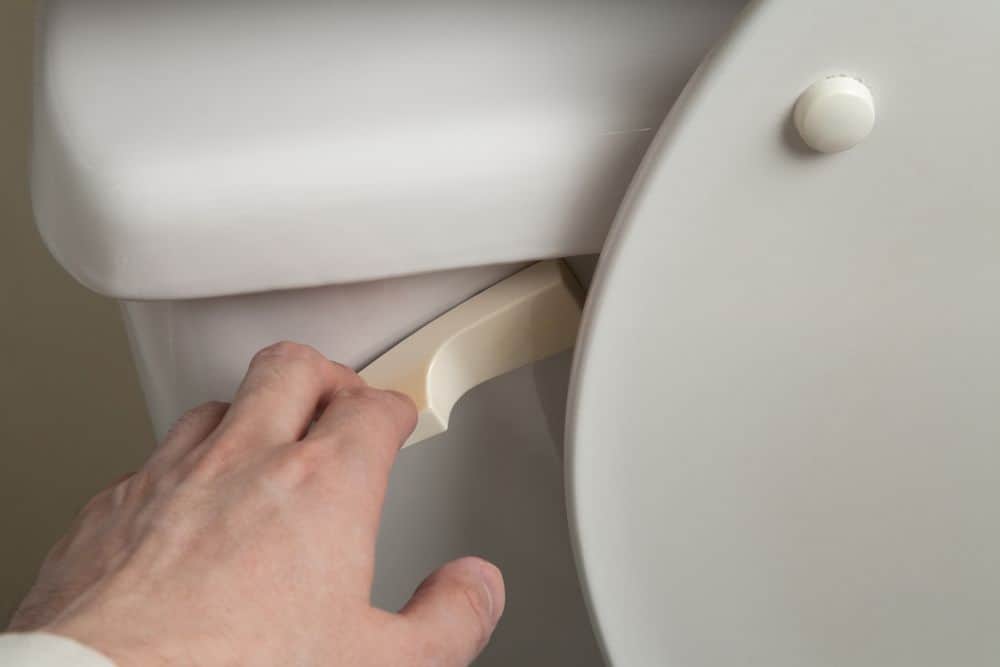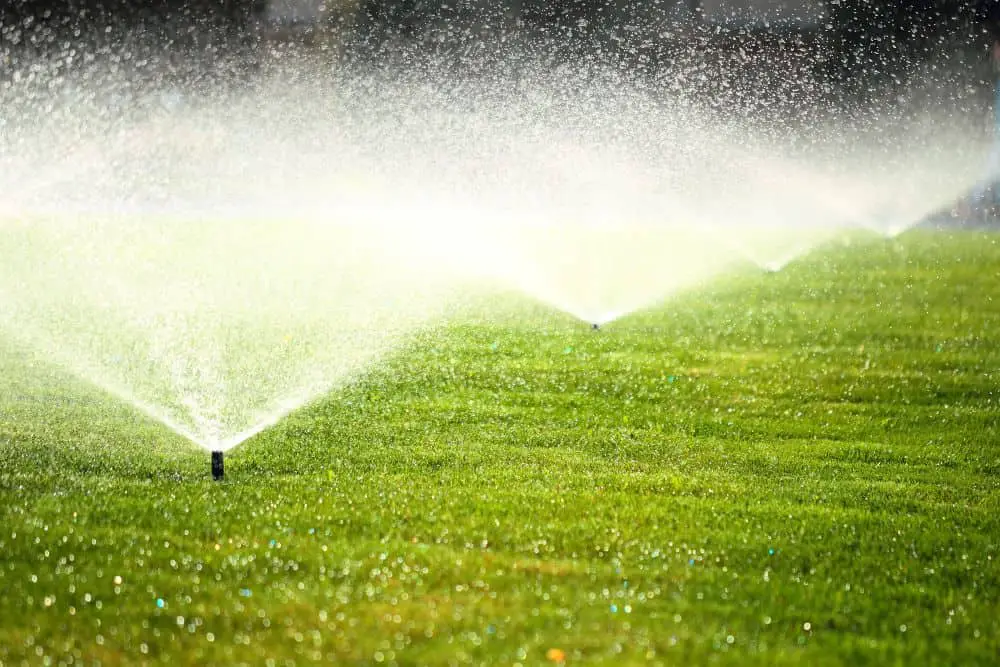Do you know how much water Americans waste every day? It is estimated that the average American uses 88 gallons of water a day[1]. A 2019 government-backed study suggested that 96 out of our 204 freshwater basins would experience shortages within the next 50 years[2].
Many of us waste water unknowingly. Not turning off the tap after brushing your teeth, rinsing dishes under a running faucet, and excessive water for vehicle washing are some ways we are wasting water.
By 2030, nearly half the world population will be living in areas classified as under high water stress[3]. Water is clearly going to be the next big crisis, even before climate change and depletion of fossil fuels hit us.
We need to change our water usage patterns. A very important step to avoid water misuse is by identifying the biggest water wasters in the home and fixing them.
Toilets
Toilets occupy the smallest rooms in your home. At the same time, toilets are the biggest source of water use in your home. Flushing the toilet is unavoidable when nature calls, but about 33 gallons of water goes down the toilet. There are minor changes that you can make to reduce water use.

What you can avoid flushing out is important. Every time you flush out baby wipes or feminine products, you waste five to seven gallons of water. Throw them in the garbage. Flushing something other than human water is bad for your pipes as well.
Older toilets waste around 1.6 gallons of water per flush. If you upgrade to a low-flow toilet, you can save up to 75%.
The Fix:
Make sure toilets are in proper working condition. Toilet leaks are some of the hardest things to detect. If you hear them run longer than usual, this is a sign of a problem.
Checking a leakage in the toilet is simple. You can add food coloring to the toilet tank. If you see color in the bowl, then it requires replacement.
You can consider a flapper and valve kit. It detects and prevents leaks. It also reduces the water needed for each flush. They are easy to install. Also, get a low-flow toilet. The new toilet uses only 1.6 gallons of water per flush.
Washing Machine
Did you know washing your clothes could take up to 54 gallons per load with a top load washer? A washing machine is the biggest water user in your home.
Depending on whether you have an older washing machine or a more efficient one, each load uses approximately 15 to 40 gallons.
The Fix
Do laundry only when you have a full load. Wait to use the washing machine until it is full. If you are an average family doing around eight loads per week, an efficient washer for your laundry can save gallons of water. Also, high-efficiency washers use less electricity than older ones.
Shower
Whether you like showering at night before bed or in the morning, you probably are using a lot of water. Long showers and hot baths waste a lot of water. Showers account for almost 17% of the water used indoors. Long showers or deep baths should not be your daily habit. Avoid standing in a shower for a long time.

The Fix:
Using a low-flow showerhead will reduce water use by 40%. Keeping showers shorter and turning off the tap when not in use can save a lot of water. Low-flow showerheads are inexpensive as well.
Faucet
Faucet accounts for about 17% of the water use. Although washing dishes and brushing teeth are the necessities, it’s easy to get lazy at these tasks. While scrubbing the utensils or finishing brushing, we tend to leave the water running.
The Fix:
Don’t let the tap run while brushing, shaving, or washing your face. You can add water-saving aerators to your taps. It saves a lot of water. Some aerators reduce flow by 77%. Aerators are easy to install and inexpensive. They cut down water use significantly.
Leaks
Leaks of any kind account for around 10 percent of household water waste. Everything in your home will leak in some way or the other over some time. The most common leaks from appliances occur from:
- A refrigerator’s ice maker’s water supply line
- Damaged pipes
- Water connection to air conditioners
- Washing machine hose connections
It is good to check your house for drips and puddles that indicate ongoing leaks in your house. Repairing leaks can save up to 110 gallons of water every year. You can check pipes under the sink, in and around the hot water tank, or in any pipelines.
The Fix:
- Keep a check of your home’s fixtures and appliances.
- Don’t be careless about the faucet drip or toilet that runs out of nowhere.
- Call the plumber when there is a leakage problem.
Doing Dishes By Hand
The majority of the taps deliver two to five gallons of water per minute. If you let the tap run while you are washing up, it wastes a lot of water. Washing dishes by hand uses around 14 gallons of water. And if dishes are also rinsed, it can go up to 33 gallons of water.
The Fix:
Have a dishwasher. Today’s modern-day machine uses 10 gallons of water per load.
Old Fixtures
If you have older plumbing fixtures, you are wasting lots of water. This even adds to your monthly bill. New fixtures are much more water-wise. The standard showerhead uses five gallons of water per minute. A low flow showerhead cuts the number to half.
The Fix:
Swapping the old fixture to new ones with water-sense certified fixtures is the easiest way to reduce water waste.
Making Biofuels
Biofuels are an environmentally friendly way of producing water. But they require a lot of water. Power plants that make biofuels use gallons of water to compare it with carbon dioxide emitting fossil fuels.
The fix:
Using sustainable waste and renewable electric power will help save lots of water. It will help keep the world’s vehicles and machinery moving in a greenway.
Watering The Garden With Sprinklers
Keeping the garden clean is not an easy job, especially during summers. A sudden heatwave can turn the green lawn into barren land in a few weeks if not watered.
To keep the garden greener, we use garden sprinklers. They are inexpensive and easy to set up. They save an unmeasurable watering time overall. However, how much water they use is a concern.

An average sprinkler system uses 265 gallons of water per hour.
The Fix:
We don’t have time to water our gardens regularly, for these sprinklers serve an important purpose. You can avoid overuse by setting them, so they go off first in the morning and the last thing at night. This way, none of the water evaporates due to warm temperatures.
Washing cars at home
Most of us wash our cars at home. We think it’s cheaper than going out for a car wash. Using a hose to wash your car uses about 80 to 140 gallons of water. In contrast, a car wash uses about 30 to 40 gallons only.
The Fix:
Go for a car wash. Professional car washers often recycle wastewater. The wastewater is sent to treatment plants to help prevent pollution.
Other Things To Consider
During summers, we mostly wash our cars often, run through garden sprinklers and water plants. All of this contributes to using a high amount of water and up sticks in our water bills. During winter, broken pipes triple the water bills before even realizing the problem.
Take the necessary water-saving advice during summers. Also, take necessary steps to avoid frozen pipes in winter.
Save More By Staying Aware
We have discovered the biggest water wasters in your home. Switching to a more efficient option is a good start. Most of us are unaware of the gallons of water that go wasted.
- Leaks. Running toilets and leaky faucets are the main cause of water wastage. It can cause untold damage to your house. You can reduce this unseen water waste by installing leak detectors on toilets and sinks. It will let you know right away that something needs a fix. If you fully integrate into a drop connect system, they can send a signal to DROP Hub to shut off the water flow.
- Careless Misuse Of Water. Leaving faucets on and running the dishwasher half-empty run up your water bill. A house water system allows you to monitor water use. You can analyze exactly where the water is used. You will even receive alerts when you use water in excess. You can automate your water use for optimal efficiency.
Wrap Up
Many of us don’t even realize how much water we waste daily. Not turning the tap off, washing the vehicle, using the washing machine and leakages waste a lot of water.
You can conserve water by using it wisely. Pay attention to how much water is being used daily and how often. Notice where you are wasting more water and try to reduce it. Try to change your lifestyle and habits to save more water than you use.
If we take just a few simple steps to reduce the amount of water we waste, it can help reduce water shortages worldwide and avert the major crisis that is hurtling towards us now.
References:
[1] Statistics and Facts | WaterSense | US EPA
[2] Adaptation to Future Water Shortages in the United States Caused by Population Growth and Climate Change
[3] Water scarcity | International Decade for Action ‘Water for Life’ 2005-2015
